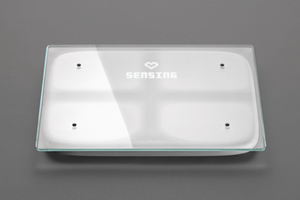November 15, 2007
Originally Published MPMN November 2007
BREAKTHROUGHS
Nanowires with Protein Coating Achieve Cellular Penetration
|
Potentially suitable for drug-delivery systems, nanowires are 50,000 times smaller in diameter than a strand of human hair. |
Researchers studying drug-delivery systems envision a future when nanomaterials are deployed in the body to treat tumors and viruses without harming normal cells. Enabling nanomaterials to easily achieve cellular penetration has been a major roadblock thus far, but results of a new study suggest that this roadblock may be surmountable. Researchers from the University of Idaho and Seoul National University have shown that coated silica nanowires can enter cultured human and animal cells and deliver a lethal toxic agent called StxA1. The report appeared in the September issue of Nano Letters, a journal published by the American Chemical Society.
A fibronectin protein coating enabled the nanowires to penetrate the cells. Field-emission scanning electron microscopy and cytotoxicity studies confirmed delivery of StxA1, a toxin known to be incapable of entering cells naturally without the presence of its counterpart B subunit.
Complex interactions among the nanomaterial, toxin, and fibronectin were observed during experimentation. Consequently, the researchers had to consider polarity and the order in which the coating ingredients are applied to the nanowires to ensure proper binding and internalization capability.
The toxin ultimately was applied first, followed by the protein; simultaneous application of the StxA1 and the fibronectin resulted in complex interactions that the researchers say will take more time to understand.
The study is part of an ongoing effort by the research group to improve the functionality of nanowires. “The next step will be to replicate the effect of the fibronectin coating with a coating that adds functionality,” says Gregory Bohach, a microbiologist from the University of Idaho. “This coating could, for example, be something that treats intracellular infection, or it could be an antibody that allows you to target some cells and not others.”
David McIlroy, also of the University of Idaho, says that binding the toxin to the nanowires was a key aspect of the study. “We used standard surface science to bring the [toxin] and protein together on the surface of the nanowires, and had to experiment to ensure that the toxin had enough bonding strength to not drift away prematurely,” he says.
A PDF version of the full report can be found at: http://pubs.acs.org/cgi-bin/sample.cgi/nalefd/asap/pdf/nl071179f.pdf.
University of Idaho, Moscow, ID
www.uidaho.edu
Copyright ©2007 Medical Product Manufacturing News
You May Also Like



